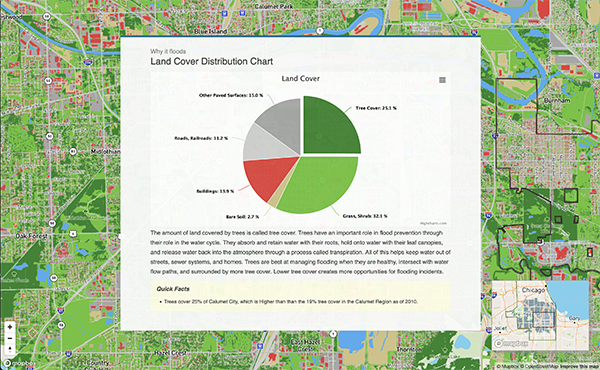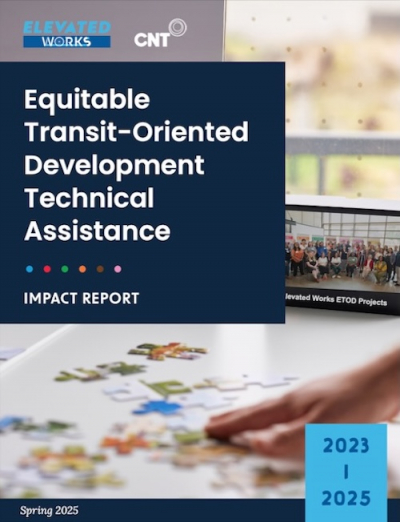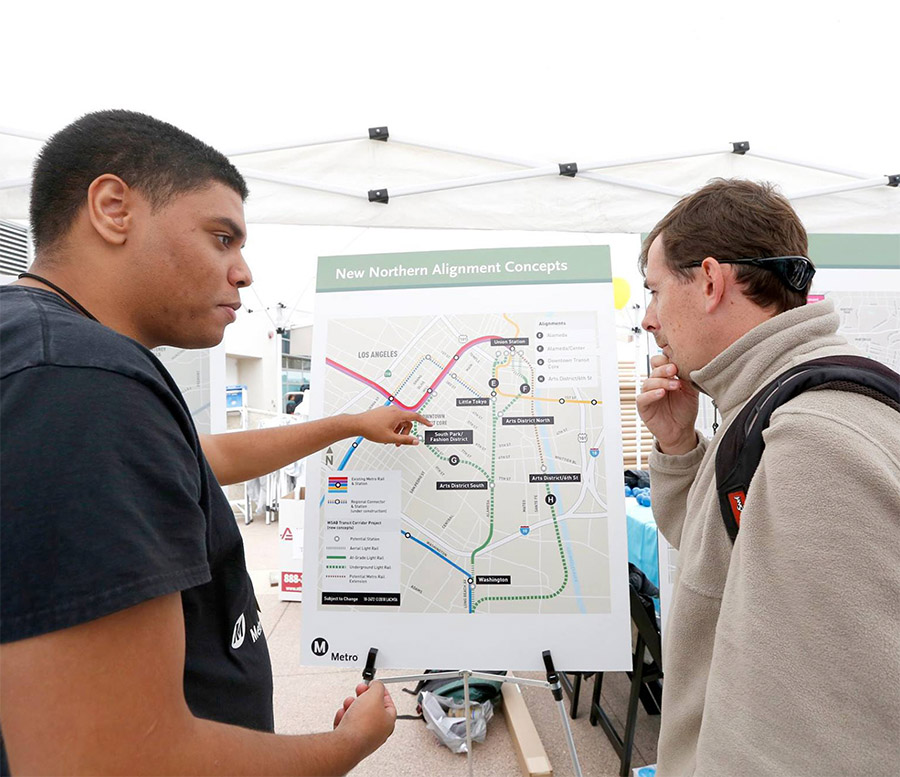
TEEM Platform endorses just transition for electric transportation
Imagine tomorrow, all vehicles in the world suddenly became battery powered. Would that achieve all our climate and environmental justice goals? Not exactly. What will help close the gap between equity and climate goals is an electrification transition that follows the principles of the Towards Equitable Eletric Mobility (TEEM) platform. Or, as one TEEM leader stated, “If you aren’t looking for the intersection, you aren’t going to find the solution.” TEEM Platform Overview... Read the rest of this entry »
H+T Series Part 2: Why use a ‘Typical Regional Household’ to Highlight Location Efficiency?
The H+T® Affordability Index highlights location efficiency by using an “apples to apples” comparison of housing costs. What’s the Question? Users often ask why we use the median-income household in every block group in a metro area, pointing out that this misrepresents the actual costs for the households living there. The question goes to the heart of how our tool shows that living in compact and convenient area helps people stretch their budget. In a nutshell, the H+T Index is a... Read the rest of this entry »
H+T Affordability Index Blog Series
Introducing a series of blogs on CNT’s H+T Affordability Index – our most popular web tool. Nearly 20 years ago, CNT (Center for Neighborhood Technology) developed our Housing & Transportation, or H+T, Affordability Index. We theorized – and the data quickly proved -- that adding the two highest household costs, housing, and transportation, changes the way we look at household affordability. In other words, examining how location efficiency drives true affordability. The H+T Index is... Read the rest of this entry »
Climate & Cultural Resilience program is now Nature Near Transit
Overton Elementary rain garden re-install and other projects lead agenda for CNT’s placekeeping projects in the heart of the city. Dedicated volunteer garden stewards gathered at Overton Center for Excellence in Bronzeville on the first day of fall, Saturday, September 23 to bring new life to the rain garden located on the east edge of the former elementary school property, an 8-minute stroll from the 51st Street Green Line station. Through our Climate and Cultural... Read the rest of this entry »
Evanston Green Homes program launches
CNT partnered more than a year ago with Evanston Development Cooperative and other groups to create the new Green Homes pilot program in two Evanston communities. It uses public funds to provide home upgrades free-of-charge. Evanston is one of the first communities in the country to launch a program like this. Homeowners and residents of the pilot program's focus neighborhoods can find out if they are eligible and apply on the new program portal at greenhomes.cnt.org.... Read the rest of this entry »
With new civic innovation hub, south suburban leaders focus on ‘technology of getting things done’
“We always think it’s going to be a big movement, a big force, something that’s beyond ourselves that’s going to be our solution when in fact, it’s us– the moms, the grandmoms, the kids,” Lorée Washington, a Riverdale community leader, said during a recent virtual workshop for residents of South Suburban communities where the RainReady project is addressing urban flooding. As we partner with local groups to develop the RainReady Calumet Corridor with support from the Cook County government,... Read the rest of this entry »
Southeast Side Climate Impacts: Quantitative data without community input misses the full story
Climate change impacts are felt by individuals and communities all over the world through intense or frequent storms, floods, and increased exposure to air and water pollutants. Who is most impacted by this? Unfortunately, those who are lower-income and have non-white racial or ethnic identities. Chicago’s Southeast Side is one of these communities. Here, residents experience health inequities from their proximity to industrial pollution, like higher rates of heart disease and respiratory... Read the rest of this entry »
CEJST is a simple map, with big implications – and attention to cumulative burdens matters.
The Climate and Economic Justice Screening tool, or CEJST for short, is a simple map, with big implications. CEJST identifies disadvantaged census tracts for prioritizing federal funding and informing Justice40, which aims to send “40 percent of the overall benefits of certain Federal investments… [to] disadvantaged communities that are marginalized, underserved, and overburdened by pollution. Over the next five years, federal and state agency staff are charged with doling out billions of... Read the rest of this entry »
Urban Flooding Baseline Tool Explores the ‘Where’ and ‘Why’ of Urban Flooding, and Who Is Most Impacted
CNT’s exploration of urban flooding CNT has worked on urban flooding for several years, focusing specifically on urban flooding because of the realities in Chicago and Illinois more broadly. FEMA's Flood Insurance Rate Maps create floodplains based on flooding from bodies of water. But based on personal experiences and relationships with residents and local professionals, CNT knew that many homes in the Chicagoland area are impacted by flooding despite being outside of flood plains. CNT... Read the rest of this entry »
Fueling the Electric Vehicle Movement with Equity
This past week, as a member of the Toward Equitable Electric Mobility (TEEM) Illinois cohort, I had the pleasure of attending TEEM’s first in-person annual convening and Forth’s Roadmap Conference in Portland, Oregon. The electric vehicle sector is revved up and eager to expand in the face of the capital to be made and legacies to build, while simultaneously acting in response to climate change. Forth’s Roadmap Conference refocuses the lens, uplifting processes, projects, and... Read the rest of this entry »





 Strengthening Transit Through Community Partnerships
Strengthening Transit Through Community Partnerships








